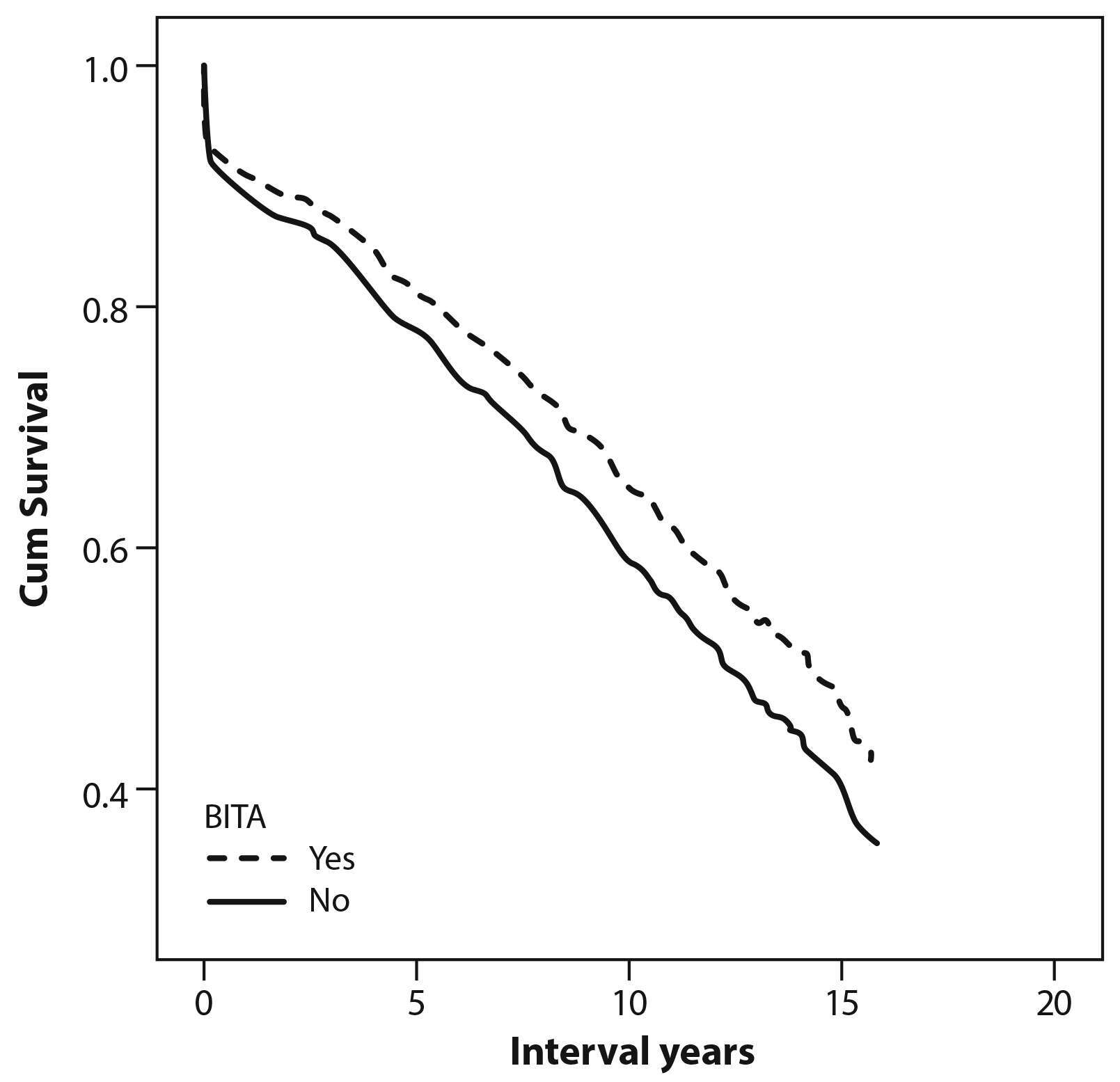Background: Bilateral internal thoracic artery (BITA) grafting is infrequently carried out as an emergency operation due to questionable survival benefit and increased risk of sternal infection compared to single internal thoracic artery (SITA) grafting. The objectives of our study were to compare early and long-term outcomes following BITA grafting to coronary artery bypass grafting (CABG) with SITA among emergency patients.
Methods and results: The 438 emergency patients who underwent BITA grafting between 1996 and 2008 were compared with the 339 patients who underwent CABG with SITA grafting. The SITA group included more females, diabetes, age 70+ years, chronic obstructive pulmonary disease, ejection fraction ≤30%, chronic renal failure, and recent myocardial infarction (PP=0.003 and P=0.008, respectively). The SITA group’s additive EUROSCORE I was significantly higher (P=0.016. Operative mortality and sternal wound infections were similar between groups. The median follow-up was 13.25±0.65 years. Ten-year survival of the SITA group was significantly lower than that of the BITA group (P<0.001) but assignment to the BITA group was not associated with better propensity-adjusted survival (P=0.620).(Cox) Ten-year survival of patients with an 11+ additive EUROSCORE was similar in both groups, but it was significantly better for BITA patients with additive EUROSCORE scores of ≤10 (P=0.012).
Conclusions: Our findings indicate that BITA grafting may be used in emergency patients, and that the long-term outcome is better in those at medium and low-risk.
Key words: coronary disease, revascularization, bypass
Kaplan–Meier Cox-graph

Kaplan–Meier - Euro-score-11+

Kaplan–Meier - Euro-score<=10


